Beyond the Terry Fox Memorial and Thunder Bay’s quirky Pagoda Visitor Centre, Fort William Historical Park stands out as a must-see attraction. One of the largest living history sites in North America, it brings to life the excitement and drama of the 19th-century fur trade.
Disclosure: This post contains affiliate links. If you buy something from one of our affiliates, we receive a small commission at no extra charge to you. Thanks for helping to keep our blog up and running!
Table of Contents
Planning a Visit to Thunder Bay’s Star Attraction
After eight days paddling through Quetico Provincial Park, we’re ready for something relaxed. A leisurely history stop, we think. Instead, our visit to Fort William Historical Park turns into another kind of adventure.
We arrive just as a tour begins—on the far side of the property from the Visitor Centre. Jogging down the wooded path toward the river, we hurry to catch up. The 10-minute stroll seems longer than it should when you’re running late.
Tip: Start your visit at the Visitor Centre for exhibits, an introductory film, and a striking wooden sculpture with images of politicians, mapmakers and more. If walking long distances is a concern, ask about the accessible shuttle from the VC to the fort.
At the Anishinaabe Encampment, interpreters from the local Ojibwa community share insights into traditional life along the river. Their stories connect past and present, reminding us that long before Europeans arrive, Indigenous Peoples trade, travel and thrive across these waterways.
Walking Through History at Fort William
From the encampment, we follow the path toward the wooden palisades of the fort. Here, the year is 1815. Nestled along the Kaministiquia River, Fort William buzzes with voyageurs, Indigenous traders and merchants from across the continent. For a few short decades, this place serves as the inland headquarters of the North West Company—one of the most powerful trading empires in North America.
Canoes rest at the dock. Laundry flaps in the breeze. Voices drift from the trading yard inside the walls. It feels like we’ve stepped into another century.
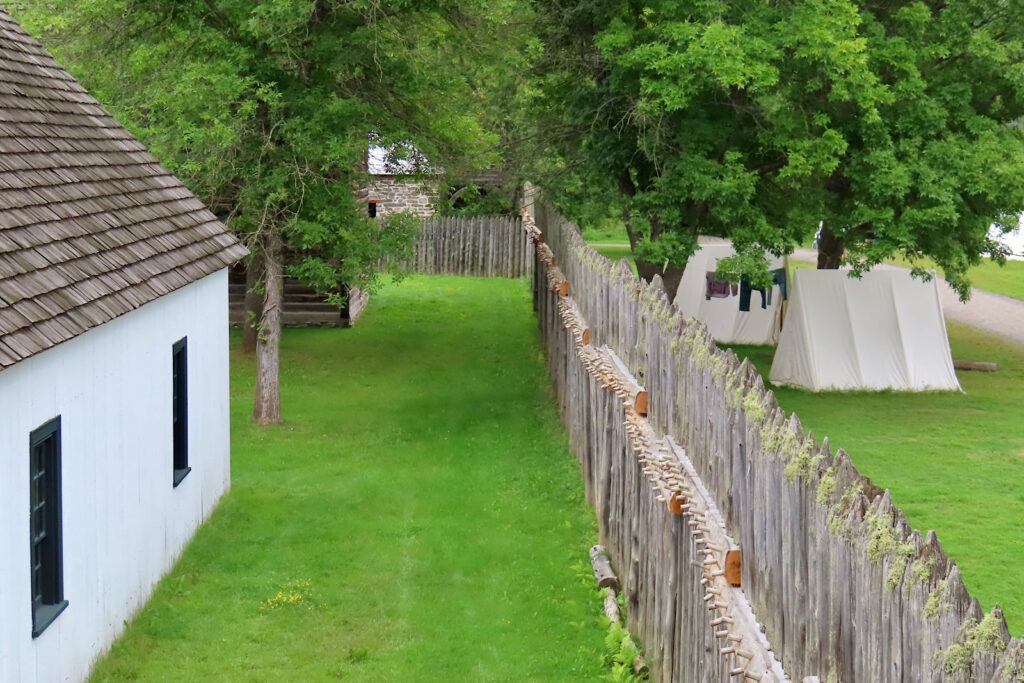
Inside, Scottish merchants and French-Canadian clerks in full costume discuss trade prices and company politics. One interpreter pulls us into an unfolding storyline: a missing ledger, whispered rumours and a bit of friendly drama that plays out in short vignettes through the day.
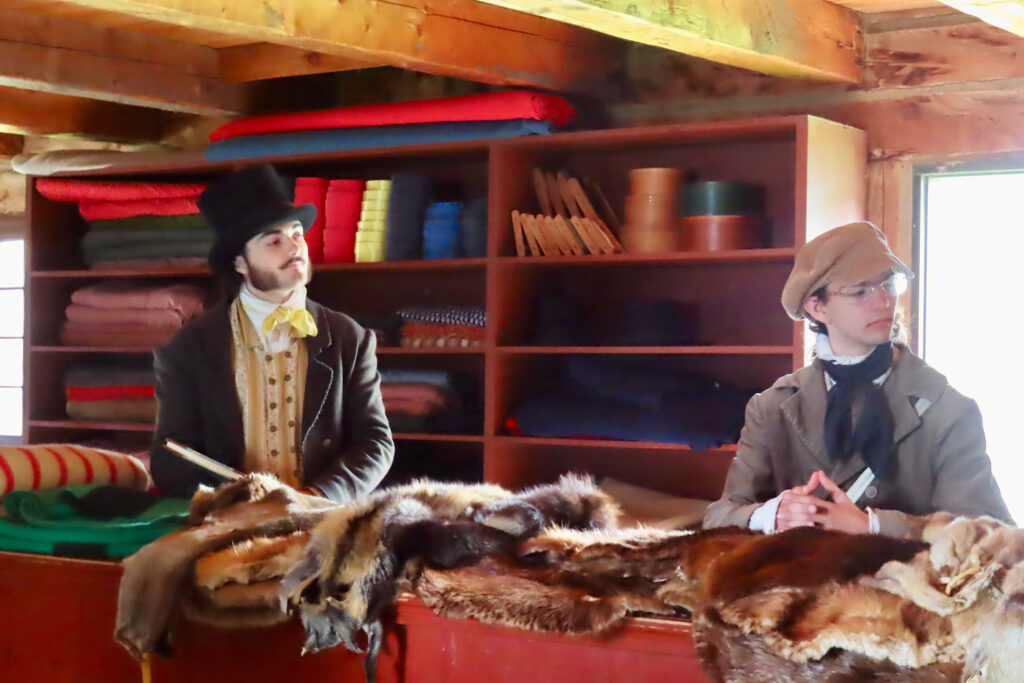
In the fur store, we test our strength by lifting a massive 90-pound fur pack with a tump line strapped across the forehead—just as voyageurs once did. My travel partner, ever the “gear guru,” jokes that one of these would’ve helped on our Quetico portages.
Stepping into the Story
Crossing the gates of Fort William Historical Park feels like entering another century. It’s easy to picture this place in its prime—when the world revolves around furs, canoes, and trade.

Long before Europeans arrive, Indigenous Peoples trade copper, shells and obsidian along ancient routes across the continent. When Europeans begin visiting the Atlantic coast in the 1500s, they join those networks, offering metal tools and beads for beaver pelts. By the late 1600s, demand drives traders west. The first post at the mouth of the Kaministiquia River rises in 1679.
A century later, Montréal merchants form the North West Company to compete with the Hudson’s Bay Company. When the 1783 border puts their Grand Portage base inside the United States, they move north and build a new inland headquarters here—naming it Fort William after company director William McGillivray.

The Fort Come Alive in the Summer
Every summer, the Rendezvous transforms the fort into a bustling hub. Canoes loaded with furs arrive from the northwest. Goods from Montréal are unloaded. Contracts are signed and stories exchanged. Evenings bring music, feasting and laughter that echo across the riverbanks.
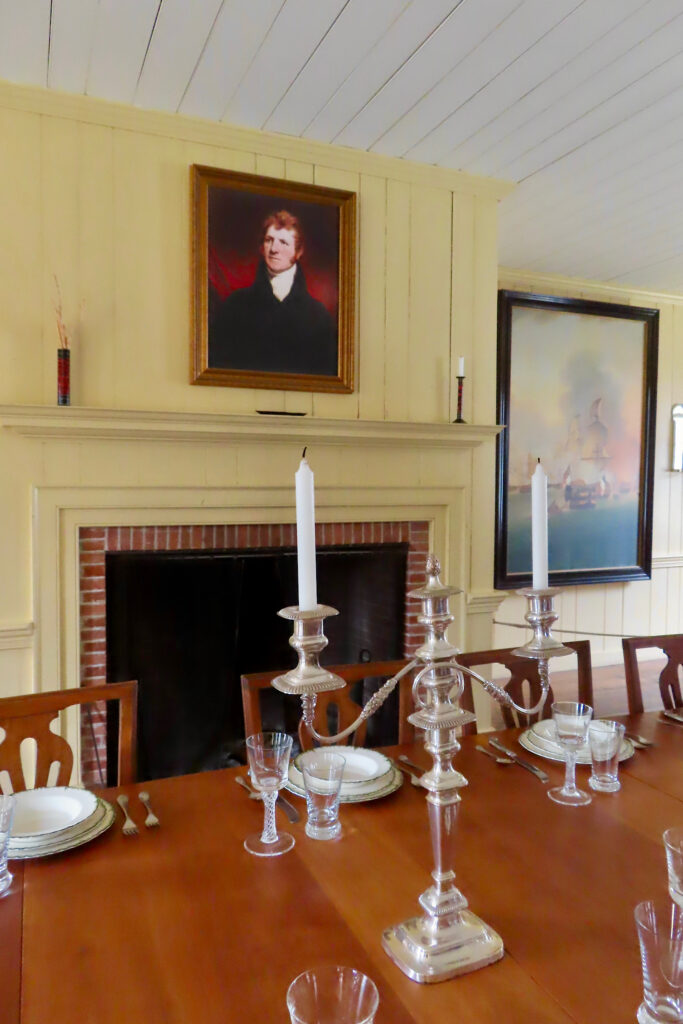
By 1821, war, rivalry and cost merge the North West Company into the Hudson’s Bay Company. The fort fades with time. Yet walking through today’s reconstruction, it’s easy to imagine those busy summer days when Fort William serves as the beating heart of the fur trade.
Exploring on Your Own
After soaking in the fort’s stories, we explore at our own pace. We chat with the gardener pulling the last vegetables of the season, peek into the canoe shed lined with birchbark vessels and wander through the Guides House.

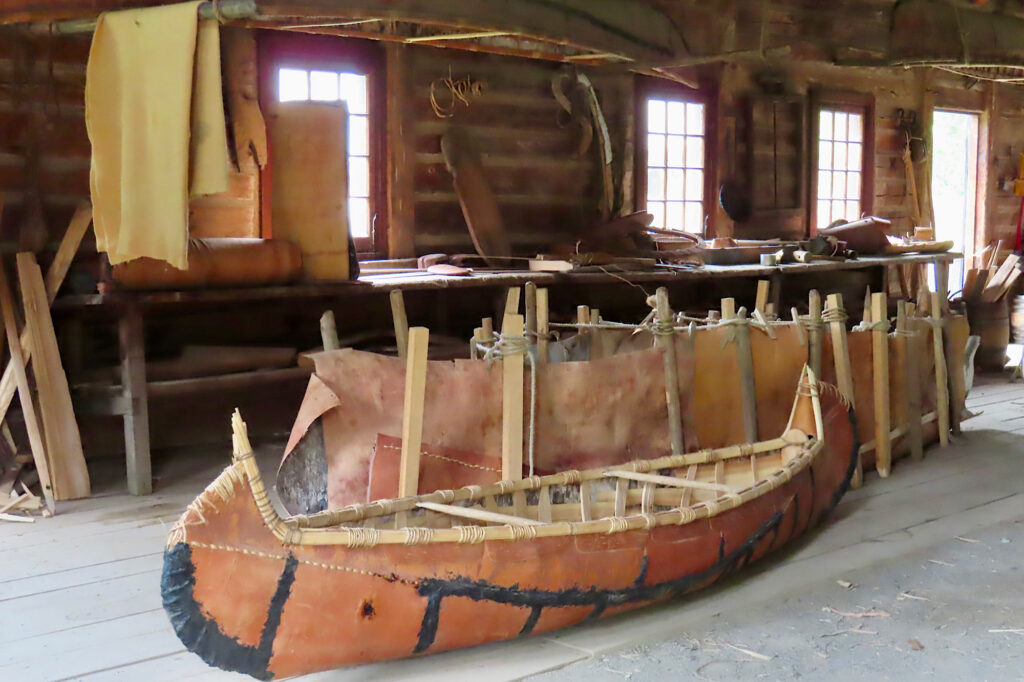
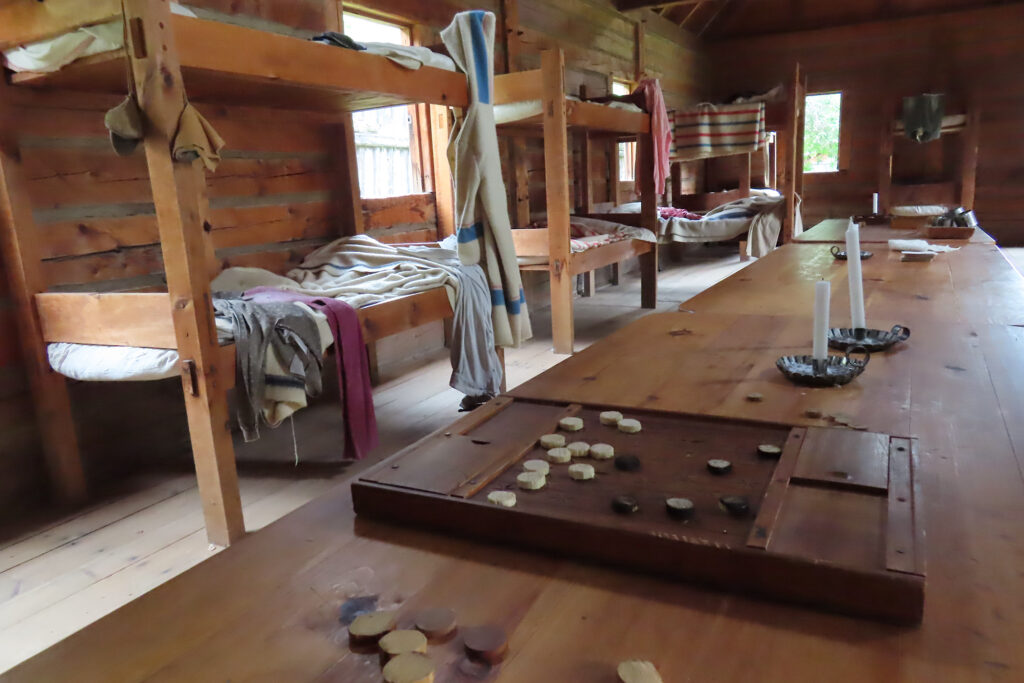
At the bakery, the air smells faintly of woodsmoke and flour. The baker explains how bread feeds hundreds of hungry voyageurs each day. No samples today—it’s late in the season—but the stories more than satisfy.
We pause for lunch at the Cantine Restaurant before strolling beside the river towards the stables. The river once carried furs and goods across half a continent. Even with fewer interpreters late in the year, the fort still feels alive, flowing like water from museum to stage to time machine.

Living History in Action
Just as we prepare to leave, costumed interpreters gather near the wharf. Voyageurs walk from the fort, singing a French song. Another group of interpreters gather near the cannons.
The same clerk from earlier appears, joined by a woman holding a baby. The woman – Louisa – is the Anishinaabe wife of Kenneth Mckenzie, the fort’s proprietor. She thanks everyone for her time at the fort. Mackenzie comes out next. He also addresses the crowd. In this story, Mackenzie earns a promotion to Montréal. The question: will his wife and daughter follow him east, or stay with her family?
Louisa steps into a waiting canoe. The voyageurs push off. Mckenzie stays on shore. Cannons fire across the water. The moment feels real—part history, part theatre. It captures both connection and tension—the meeting of worlds that define life in the fur trade.
Final Thoughts
If you plan a trip to Thunder Bay, put Fort William Historical Park near the top of your list. Set aside at least half a day—or a full day if you can. Talk with interpreters, explore the grounds and soak in the atmosphere as you wander through more than 30 buildings.

Whether you come for cultural insight, immersive storytelling, or to stretch your legs after a long drive or paddle, Fort William offers a rare chance to step into Canada’s fur trade past—a world where canoes are water highways and history is written by hand in ledgers and song.
Know Before You Go: Fort William Historical Park
📍 Location
1350 King Road, Thunder Bay, Ontario — about a 15-minute drive southwest of downtown along the Kaministiquia River.
🕒 Hours
Open seasonally from late May through September, with reduced hours in spring and fall. Winter weekends often feature special events like snowshoeing and historic holiday programs.
💲 Admission
Tickets are available online or at the Visitor Centre. Adult admission is around $15–$20 CAD, with discounts for youth, seniors, and families. Guided tours are included.
🍂 Best Time to Visit
Summer brings the most activity—blacksmiths at work, voyageurs singing, gardens blooming. Late September offers quieter visits with fall colours along the river.

Plan your adventures with our 2026 RV Trip Planner available in our Etsy Printables Shop!
🏕️ Where to Camp Nearby
On the scenic Kaministiquia River, Fort William Historical Park’s campground welcomes RVs, trailers, and tents. Serviced sites (water & power) cost about $40/night; non-serviced sites are $25/night. Open from Victoria Day Weekend through Thanksgiving Weekend, it’s a convenient base for exploring Thunder Bay.
🐾 Can I Bring My Dog?
Yes! Pets are welcome. Dogs are allowed at both the campground and historic site but must be leashed. (Note: pets aren’t permitted inside the Cantine Restaurant, Gift Shop, or McGillivray’s Landing.)
♿ Accessibility Tips
The Visitor Centre and many areas of the fort are wheelchair accessible, though some paths are gravel or grass. A courtesy shuttle runs from the Visitor Centre to the main gate.
🔗 Learn more
Fort William Historical Park official site
Pin this post for future reference!
Continue your journey eastward: Next Stop → Lake Superior Provincial Park and the Agawa Pictographs








Leave a Reply